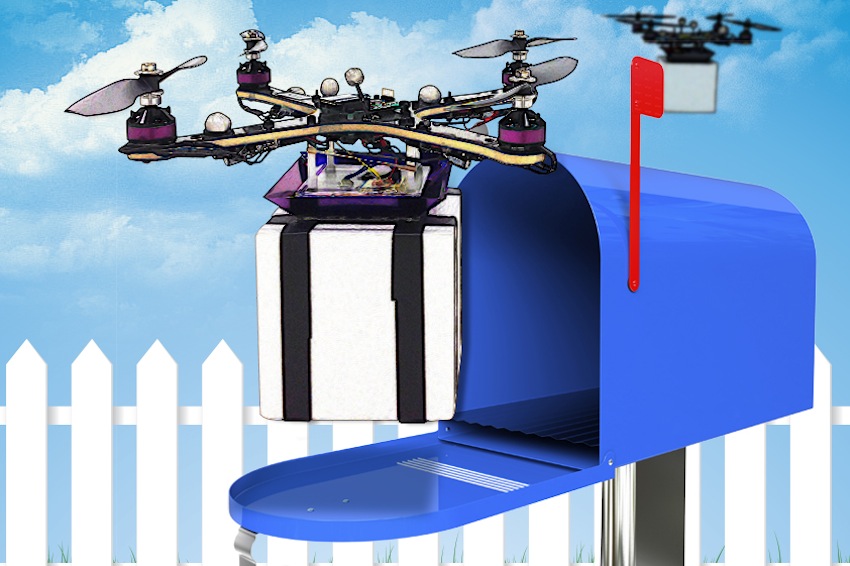How Delivery Drones Could Monitor Their Own Health

The day when people can order products online and have them delivered by a drone may not be far off. But to make sure these packages make it to their destinations, scientists have created a program that lets robotic flyers monitor their own "health" midflight.
The online retail giant Amazon announced a plan last December to use fleets of drones to deliver packages to consumers within half an hour of when an order was placed. But to arrive safely and on time, the tiny flying bots would have to be able to handle conditions such as high winds, fuel shortages and potential sensor errors.
"With something like package delivery, which needs to be done [consistently] over hours, you need to take into account the health of the system," Ali-akbar Agha-mohammadi, an aeronautical engineer at the Massachusetts Institute of Technology in Cambridge, said in a statement.
Agha-mohammadi and his colleagues developed a computer algorithm that enables drones to monitor the state of their equipment and sensors. It also helps drones head off problems; for instance, if fuel is low, the drone could plot a course for the nearest charging station. [9 Totally Cool Uses for Drones]
The team also figured out an efficient way for the drone to calculate all possible routes to its destination before takeoff, so it can avoid potential collisions.
The researchers simulated a set of drones in a realistic environment, one in which the machines had to make multiple deliveries. Scientists then compared the performance of bots that had the health-monitoring system to those without it. The self-monitoring drones delivered the same number of packages as regular bots, but had fewer problems or breakdowns, the researchers said.
To navigate, autonomous vehicles often use a decision-making method known as the Markov decision process, which can be thought of as a tree of possibilities in which each action branches out into other actions. The process involves figuring out the path of decisions that involves the least risk.
Get the world’s most fascinating discoveries delivered straight to your inbox.
But the Markov process doesn't work so well in the real world, where even a strong gust of wind can throw off a measurement, the researchers said. So instead the researchers used a slightly different method that still involves a decision tree, except that each branching point includes the probability of an outcome occurring. This leads to a huge number of possible outcomes, which is difficult to compute.
To make that computation more manageable, the researchers divided it into two parts: keeping track of the drone's location (vehicle planning), and monitoring the condition of the vehicle's components (mission-level planning). Essentially, the algorithm narrows the vehicle planning down to only the likeliest possibilities that can be calculated before a flight, freeing up computing power to do mission-level planning while the drone is in the air.
In the future, the researchers plan to test real package-carrying drones using the new health-monitoring system.
The group will present its findings in September at the IEEE/RSJ International Conference on Intelligent Robots and Systems, which is being held in Chicago.
Follow Tanya Lewis on Twitter and Google+. Follow us @livescience, Facebook & Google+. Original article on Live Science.



